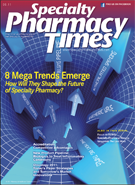Rheumatoid Arthritis Watch
JIA Associated with Growth Retardation
In a retrospective review conducted by researchers from the Sackler School of Medicine in Tel Aviv, Israel, and published online ahead of print in the Journal of Pediatrics, it was found that a significant portion (35.8%) of patients with juvenile idiopathic arthritis (JIA) had some degree of growth retardation.
The study obtained data from a retrospective analysis of the charts of 95 patients with persistent oligoarticular JIA. The mean age was 4.9 ± 3.4 years at the beginning of the study and 6 ± 3.7 years at follow-up. The researchers separated these patients into 2 groups: patients who received intra-articular corticosteroid injections (IACSIs) alone (group I) and patients who received disease-modifying anti-rheumatic drugs (DMARDs, group II).
What the researchers found was that while the patients in both groups had significant growth retardation as measured by a change in z score, the patients in group II had far more growth retardation than group I, which may be due in part to more severe disease as well as the toxicities associated with DMARDs in children. The study also found that younger patients at onset of disease carried a greater risk for growth retardation. Further, the researchers observed that the only reliable marker for this change in growth velocity was the erythrocyte sedimentation rate (ESR), which was shown to be markedly elevated in patients who experienced growth retardation, and not the number of IACSIs the patients received.
Although the study was not randomized, and it gathered its data from a single center, the study showed that multiple IACSIs are not correlated with increased growth retardation, and candidates for DMARD therapy may benefit from corticosteroid injections instead. The authors noted that in patients where DMARD therapy is required, monitoring elevations in ESR closely may assist in predicting growth retardation.
Diabetes Incidence Lower with Certain DMARDs
Researchers from Brigham and Women’s Hospital in Boston published a large retrospective analysis in the June 22/29, 2011, issue of JAMA that found the risk of developing diabetes mellitus was lower in rheumatoid arthritis (RA) and psoriasis patients on certain DMARDs compared with other DMARDs.
The study analyzed 13,905 participants with 22,493 treatment episodes starting a DMARD regimen. New diabetes cases were reported during a 2-year period, and incident rates were calculated for each group of patients receiving a particular DMARD regimen. The researchers found that of the 267 newly diagnosed cases of diabetes, the incident rates were lowest for tumor-necrosis factor (TNF) inhibitor users and hydroxychloroquine users.
Researchers believe that the inflammation inherent in RA and psoriasis contributes directly and indirectly to atherosclerosis development and, later, to diabetes. The decreased incidence of diabetes in patients who receive TNF inhibitors may be due to the immunosuppression associated with these agents, which has been shown in prior studies to improve insulin sensitivity. Hydroxychloroquine, researchers theorize, may have direct beneficial effects on pancreatic islet cells, which has been shown with in vitro models. More studies are needed to assess this potential benefit of TNF inhibitors and hydroxychloroquine.
Predicting Risk of Infection in RA Patients
Researchers from the Mayo Clinic in Rochester, Minnesota, conducted a prospective, population-based cohort study to attempt to identify any biomarkers that may predict risk of infection in RA patients. Currently, infection is a major cause of mortality in RA patients, second only to cardiovascular disease.
The study, published online first in the journal Clinical Immunology on May 30, 2011, enrolled 267 subjects with RA and measured ex vivo cytokine production from peripheral blood mononuclear cells (PBMCs) from blood samples. Incident infections were identified during a 6-month time period, and the cytokines previously isolated were analyzed.
Among the 267 individuals, 28 experienced 1 or more infections during the 6-month period. The researchers observed that the production of 7 cytokines—including interleukins 2, 10, 8, and 17; TNF-α; interferon-gamma; and GM-CSF—by PBMCs in response to various ex vivo stimuli was associated with an increased risk of infection during the 6 months. The authors state this is among the first longitudinal studies to identify predictors of infection in RA patients by assessing the function of the innate and adaptive immune system. Hopefully, the use of such assays can be used clinically in order to assess a patient’s risk for infection. “We are taking steps to enhance the standardization and reproducibility of the developed assays,” the authors write. SPT

